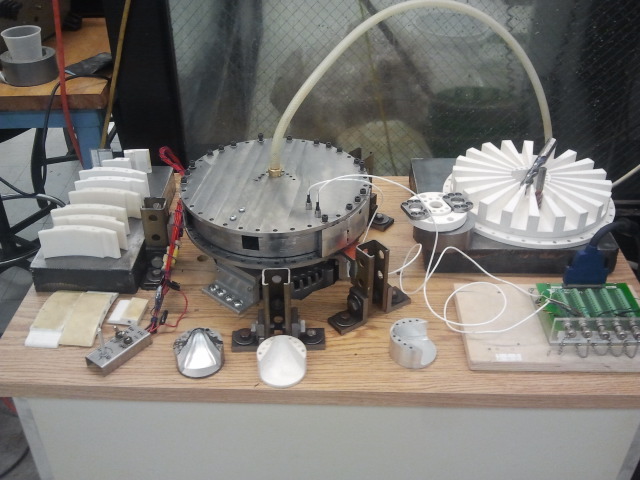The Project

On our path to success, our group was to be able to create computational models using computer aided design and computational fluid dynamics to provide specifications for the wave disk engine. Once these analyses were complete, in addition to material strength comparisons and procurement, a proof of design prototype was machined to show that such an device can rotate while enduring the loading of inlet and purging. This design took into account all the analytical results we garnered. The group took measurements of relevant thermodynamic properties at specific points and compared the experimental results to the analytical and computational results from the analyses performed. This proof of concept design was made to be modular. Beyond our second tier of success, we explored the effects of an increasing impeller angle and methods of attaching the inlet mass flow as well as the geometry and location relative to the inlet of the outer housing.
We integrated an accurate control system and data acquisition set up to monitor the flow and fluctuations of pressure. What were necessary, outside of a robust control system, were accurate sensors, transducers provided by Kulite, and a modular method of changing inlet and exit conditions. Taking into account a proper inlet supply, an appropriate control system, and data acquisition methodology, we were able to see pressure fluctuations thus proving the concept of pre-compression of fluid in the chamber. This concept allows for further research in the development of the device to allow for high efficiency combustion.
After several months of consistent work, we were able to accomplish third tier with great assurance. From our data we believe we may have accessed our fourth as well. We are very proud of the outcome and the fact that we were able to succeed even in the face of adversity; we hope that future groups will take on our project and push it further at Columbia University.